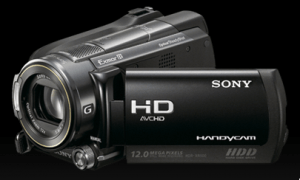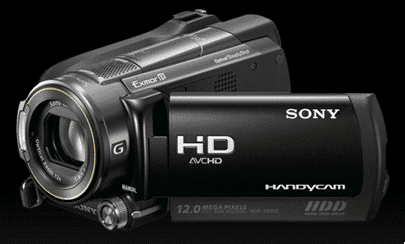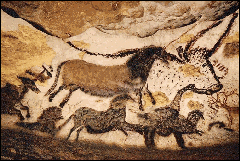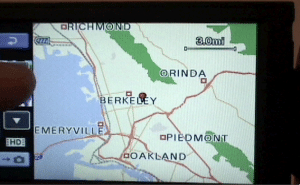Every family has a story teller. It’s the person who can captivate an audience as they lead them down a path of words, memories and emotions. We do have to admit, some people are much better at doing this than others. I, for one, have an absolutely horrible memory. The only stories I tell are ones that I really know well and that have been told time and time again. For me, it was always about the details and many times, I would get so wrapped up in trying to remember them that the magic of the story was lost. My father, on the other hand, is quite the opposite. He has the skill of intelligent and engaging conversation, making you pay attention, learn and laugh in the process.
 As part of the Sony DigiDad Project, where Sony has lent us a variety of really great tech gear like BRAVIA TVs, VAIO laptops, Digital SLRs and Blu-Ray players, one of our “assignments” was to do a “Heritage Time Machine” using the Sony HD Camcorder they lent us (HDR-XR500) . The idea was to capture family history in HD video with no other real guidelines set. This was actually a great project since I had only recorded a few stories from my grandmother before she passed away several years ago; my wife did the same with her mother. So this concept of recording one’s family history or heritage is not a new concept, just the manner and tools available to do so have changed.
As part of the Sony DigiDad Project, where Sony has lent us a variety of really great tech gear like BRAVIA TVs, VAIO laptops, Digital SLRs and Blu-Ray players, one of our “assignments” was to do a “Heritage Time Machine” using the Sony HD Camcorder they lent us (HDR-XR500) . The idea was to capture family history in HD video with no other real guidelines set. This was actually a great project since I had only recorded a few stories from my grandmother before she passed away several years ago; my wife did the same with her mother. So this concept of recording one’s family history or heritage is not a new concept, just the manner and tools available to do so have changed.
The Art of Storytelling
Long before the advent of tech, a time that my wife would gladly have lived but I probably would have withered and died like a flower without sun, storytelling was one main forms of entertainment. But it also served the purpose of continuing legacies and ensuring that family history was passed from generation to generation. The spoken (and written) word was the way that many family members learned about their generational history. Even as far back as the “cave dwellers” many thousands of years ago, history was depicted with pictures and some form of spoken communication. Children nowadays do their own type of cave drawing (hopefully not with crayons on the walls) but in the forms of pictures and artwork. They too, suck up stories that are told to them, and become enriched in the process (which helps their brain development as well as teaches them the importance of a good story).
As time went on and “technology” evolved, much of the storytelling moved to the written word. The epic Beowulf comes to mind as I remember reading it in Old English. The only way for me to truly understand it was to speak it out loud and interpret the words. Still, not all families had epic stories to tell, but they did have stories that were required to transcend generations. What makes storytelling so powerful is how a story can evolve and morph as it is passed along. At a recent family gathering, we played the “telephone” game where you whisper a sentence to your neighbor and then the phrase is passed around a group of people. The last person in the line then says what they heard. It’s amazing how just that short communication channel can change the context of what was originally said.
Fast forward to today and the art of storytelling is rapidly becoming overshadowed by technology and gadgets. While I, for one, am obviously a big proponent of all things tech, as I started thinking about this Sony project and actually doing some recording, I really started pondering the entire process of preserving family history and the tales therein and wondering how much people are being distracted by the tech side instead of the actual content being spoken or heard.
When you think about this Family Heritage project, using HD video recordings to capture the spoken word, gestures and interactions with the audience, it gives you much more to consider. For starters, you still have the story itself, told with the same power and compassion of that of the past, long before recording devices. This is an important fact. However, once the digital recording is made, you suddenly lose the ability to transform it to your OWN story, as compared to verbally passing from generation to generation. With an HD recording, the result is video and audio that is nearly lifelike in quality. This is very important from an archival standpoint, however, it also transforms the story telling experience from an active to a passive activity; active in that you interact with the teller, ask questions, respond, laugh, cry and engage, to passive where you simply sit, watch and listen.
So which is better, the old way or the new way? Both have advantages and disadvantages. The old way is pure, allows for the story to become a living object, embedded within the teller and the listeners. The new way is accurate and still involves an interaction between teller and listener. But on the flip side, the old way does have an end; a generation could pass without someone gifted at storytelling or just encounter the end of a family line. Also, the old way (with stories evolving over time) do make for entertainment, the accuracy and legitimacy is lost or changed. The new way has downsides as well as I have mentioned already: you have the initial interaction but thereafter, it is very passive. Also you need to compile, edit and produce ways to “play the story again” for later generations and hope that one of the viewers will listen and learn about the history and in turn, pass that along down THEIR generational lines.
How then, using modern technology, can you keep stories like “the big fish that got away” alive and breathing within our families? It isn’t easy but there are definitely ways. First of all, people need to have physical reminders of their past and generations past. Photo albums and diaries are key examples of how recorded stories can help to keep the tradition alive. With each photo, there is a story to tell and hopefully someone who remembers it. We have several antiques at our house that have been passed down to us. Some of these antiques now include a slip of paper that has something about the piece, who owned it, how they acquired it and anything else important around its being. Some older pictures have writing on the back or in the margins of albums to say who the people are, where and when the picture was taken.
Once you do digitize, you need to make it accessible. And, when you show photos of video, it must be an interactive process. Having a narrator available when digital video or photos are being displayed will make the passive storytelling experience much more active, and will help to cement it into the memories of those partaking in the process. You should also ensure that these recorded stories are available for all to see and hear at a moment’s notice, much like the immediacy of physically picking up a photo album and sitting down with someone to explore the content and memories therein.
Does Technology Help or Hurt the Art of Storytelling?
Advances in technology now enable us to do things similar to the old way of documenting and categorization of photos and other memorabilia, however, there is definitely plenty of work involved to accurately document those items. Not only do you have to capture events, people or places, you must document them and be able to produce physical instances of the digital media. People enjoy the physicality of printed or developed photos. Videos need to be on physical media and easily accessible using older, more commonplace technology (like DVD players). Now, advances have been made to make this a bit easier. The Sony HandyCam that I used for this project, for example, has a GPS built in, which means that every video that is recorded also has the date, time and actual location recorded with it. You can also hook it easily to just about any TV.
I recorded about 2 hours of High Definition video when I interviewed my father. I probably could have done another 10 or 20 hours and only have gotten a fraction of the knowledge and family history. I actually consider myself blessed because my father knows how to tell a good story as well as to convey the historical worldly importance and how a family event related to events in history. My father is a German History professor at Stanford and is fairly comfortable in front of a camera. However, I wanted the conversations to be non-staged so we simply sat around the dinner table and over a few glasses of wine, proceeded to do what I feel to be just the start of the project. Unfortunately, I was under a deadline to write about the experience and could not fully explore all of the stories in greater detail. I will, however, endeavor to continue this project on my own later.
What I did record is great, from both the story standpoint and the quality of the recordings. Instead of reposting snippets of our family history (which would have little to no importance to you), I thought that I would showcase how I used the Sony products as part of this project. A bit further down in this post, you can see the actual video I produced.
Technology Behind the Interviews
Obviously, the spotlight of technology is on the Sony HD HandyCam (HDR-XR500). Things that immediately jumped out at me were how easy it was to use. You flip open the screen and the camera is ready to go and automatically uncovers the lens. The GPS worked quickly to locate where I was filming. The touch-screen was simple and reminded me of an older Sony HandyCam that I have. The videos produced were extremely crisp when viewing on the HandyCam and later on the Sony VAIO laptop. Sound quality was great (and there is the ability to attach an external mic which has many potentials). The image stabilization was pretty amazing as well. As I panned and moved, the display on the HandyCam did not jitter and kept the motion very smooth.
Some quick tech specs on the HDR-XR500:
- Format: Hard drive – MPEG4, AVC/H; SD card – MPEG2
- Video Signal: HD – 1920×1080/60i; SD card – NTSC color
- LCD Screen: 3.2″ wide touch panel LCD display
- Still Picture Resolution: 12 Megapixels
-
Recording/Playback times:
- 120GB HDD: High Definition: FH = up to 870 min., HQ = up to 1770 min. SP = up to 2150 min., LP = up to 2870 min.
- Standard Definition: HQ = up to 1770 min., SP = up to 2620 min., LP = up to 5020 min.
- Audio Recording Format: Dolby Digital 5.1
- Built-in Zoom Microphone
- Other features: Nightshot, Face Index, film roll, fader effects, slide show mode, BRAVIA sync, Face Detection, Smile Shutter
- A/V out: HDMI, S Video, Component
- Weight: 1lb 4oz with battery
- Dimensions: 2 7/8 x 3 x 5 1/2 inch
- Optical: 43-516mm (16:9), 52-624 (4:3), Digital Zoom – 150x, Optical Zoom – 12x
Loading the videos to the VAIO was a snap. Simply plugging in the provided USB cable allowed for rapid moving of the HD videos from the HandyCam to the laptop. Note, the HandyCam stores all of the videos internally on a 120 GB hard drive. There are no tapes to worry about. You can store about 870 minutes of HD video. Once I had the videos (and some photos that I took with the HandyCam) completely transferred, I launched Sony’s VAIO Movie Story . This is actually quite a slick program. You basically tell it to look at a variety of video or photo files, select a theme for your movie as well as some music, and then let it do its magic. What you get as an end result is a movie like the one you see below. For this blog post, it was a great way to showcase some of the video that I recorded and present it in an elegant way. The only issue that I had was some of the darker shots as well as washed out shots and a bit of stuttering on the slow motion videos. But in terms of a way to summarize a series of videos and/or photos, I really liked the idea behind it as it essentially creates a video and photo montage.
The HandyCam is probably the device that I would want to keep most if I were able to do so after this project. It is small and fairly lightweight, has ample storage and some really great features. Writing about it doesn’t do it as much justice as doing a quick video review. Unfortunately, I could not use it to film itself, so I used an older Sony HandyCam recording digital (non High Definition) video directly to my Mac to record the following video of some of the functionality present on the Sony . The MSRP for the Sony HDR-XR500v is $1299.99 (according to Sony’s site), Amazon lists its MSRP at $1499.99 and has it on sale for $1329.95. Be sure to recheck the Amazon price as it will probably drop.
Regardless of whether you use the latest state-of-the-art equipment to record your family history, or paper and pencil and an old 35mm camera (do those still exist?), it is definitely important to ensure that you, your children and their children know important facts and history about their heritage. Often, as we race around (and trust me, I know that everyone is busier and more distracted then ever before in history), we forget to focus on the things that are important: family, friends and face-to-face interaction.
While using the latest and greatest tech can help you capture a lot of moments, you still need to be able to make these moments usable as well as create a valuable interactive and rich experience for posterity. This means actually sitting down and taking time to discuss what is seen and heard and committing things to memory. Technology is not a replacement for memories, it is merely a tool to record and document. It will never replace “the living story.”
This post is part of series called the “Sony DigiDad Project†by Sony Electronics where a group of dads, including C.C. Chapman, Jeffrey Sass, Max Kalehoff, Michael Sheehan, and Brad Powell, have been given the opportunity to test and review Sony gear. If you want to know more about this project, view my “SonyDads†tagged posts here or visit the Sony Electronics Community.
HTD says: With storytelling, technology is merely a tool to ensure that the story is accurately recorded and documented. It is, however, the responsibility of a living person to bring the story to life!





9 comments
usa basketball shoes
In this material life of society, fashion seems to be a habit. Here you can recommend a few mall, I feel good.basketball shoes outlet
ugg boots
Well , the view of the passage is totally correct ,your details is really reasonable and you guy give us valuable informative post, I totally agree the standpoint of upstairs. I often surfing on this forum when I m free and I find there are so much good information we can learn in this forum!
Chanel shoes
Online Shopping Mall
Really enjoyed your Art of Storytelling piece – cheers!
Mbop Megashop
uggs outlet
I totally agree the standpoint of upstairs, and I believe this will be a trend. I often come this forum , rom here I learn much and know the newest tide!
<a href=” http://www.eeadie.com“ >eeadie
the content here constantly update and I love it! Another I know some websites which often update their contents, you guys should browse if you are free.
air jordan 12
Here elaborates the matter not only extensively but also detailly .I support the
write’s unique point.It is useful and benefit to your daily life.You can go those
sits to know more relate things.They are strongly recommended by friends.Personally!
http://less-accurate.com/
bianca
i liked your review of the kodak vs. flip ultra hd camcorders. i am new to this and wondering how the sony playsport compares. i like that it is waterproof to 10ft, but concerned it does not have the usability of the flip hd.
hightechdad
My dad did see final result and enjoyed it. The stack of ice cream pints is a weekly tradition that we do. My kids love taking ALL of the ice cream from the freezer and piling it up on the table in towers. Trust me, many rounds of bowls filled with ice cream were passed around! Thanks for the comment! It was a fun and educational project.
hightechdad
My dad did see final result and enjoyed it. The stack of ice cream pints is a weekly tradition that we do. My kids love taking ALL of the ice cream from the freezer and piling it up on the table in towers. Trust me, many rounds of bowls filled with ice cream were passed around! Thanks for the comment! It was a fun and educational project.
sukhjit
Michael, glad to hear you are making use of the GPS feature on the HDR-XR500. Thanks for the detailed review of the products and process you used for your Heritage Project. The video you created using Sony Vaio Movie Story does have an elegant feel with the addition of montage and music. Hope you and your dad had fun! Also really enjoyed the discussion you’ve started about the art of storytelling. I did have a couple questions for you after watching it all. Has your Dad seen the final result? What does he think? And… uh.. is that a stack of ice cream pints on the kitchen table and how come nobody is eating them! =)
Sukhjit
Sony Electronics Blogger